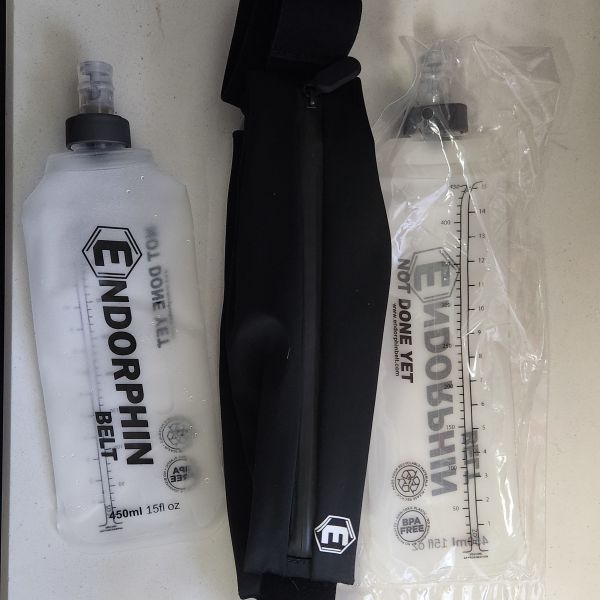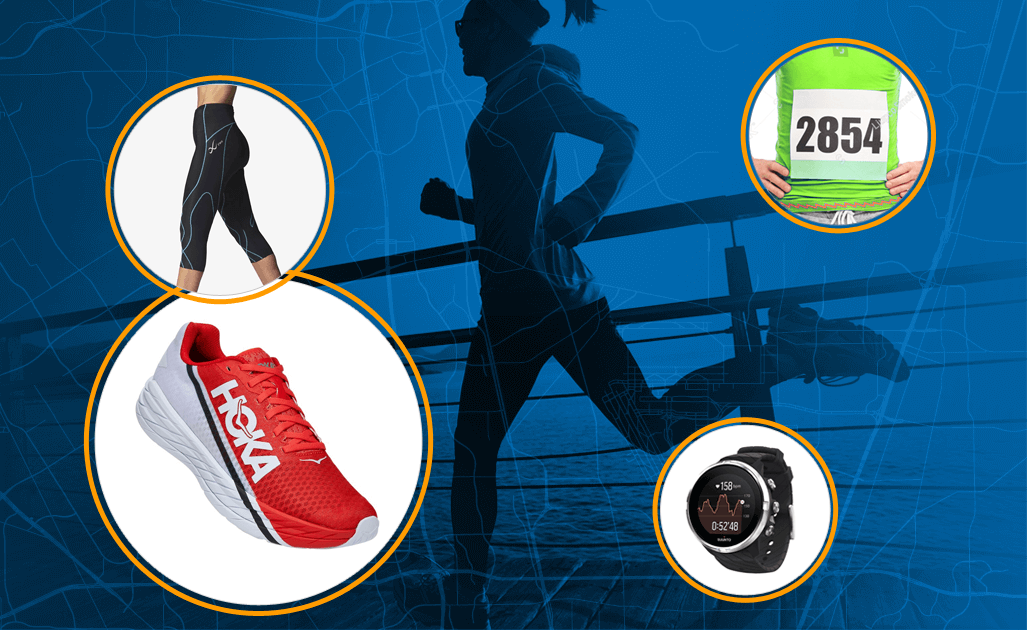What does endurance athlete nutrition look like?
If you're looking for a way to dial in your diet to be a better runner, registered dietitian, personal trainer, and marathon runner Holley Samuel can help you go the distance.
These 8 endurance athlete nutrition tips will help boost performance, speed recovery, and keep going...
Runners—regardless of our competitive level, experience, age, or gender–can usually agree on one thing:
Ensuring proper nutrition as an endurance athlete—and yes, if you run, you’re an endurance athlete—is one of the most effective ways to support your:
Eating enough, eating the right foods, and timing your nutrition accordingly can be a game changer when it comes to endurance athletics.
But with all of the nutrition information out there — some of which is questionable at best...
Fortunately, you’ve landed in the right place (don't stop here--check out this article for even more running nutrition & hydration knowledge)!
🏃♀️WeeViews’ February giveaway partner, Holley Samuel—a marathoner, dietitian, certified personal trainer, and coach–gives her top tips for creating your own endurance athlete nutrition plan!
Keep reading if you want the rundown on:
There’s no way around it...
The unavoidable fact that running is tough, even for the fittest athlete.
The mechanical, cardiovascular, and neuromuscular stress from pounding pavement (or trail for that matter) takes a toll on the body.
As we train and stress the body, we must:
Hungry for more?
Here are 8 tips to help you maximize endurance athlete nutrition...
This first tip might seem obvious...
But in Holley’s professional experience with endurance athletes:
“If you’ve never been super intentional about eating enough, you’re probably not eating enough.”
Undereating results in:
Holley suggests that runners eat every 2-4 hours to:
Ask yourself:
Here's some food for thought:
“Restriction is the number one predictor of a binge,” according to Holley, and a large body of evidence in the nutritional science field.
While you might not always be hungry at a scheduled meal time, it’s an act of self care to fuel your body properly.
Once you’re sure that your daily caloric needs are met, it’s time to look at where the calories are coming from.
Holley suggests that endurance athletes focus on:
With the right ratios and intentionality, you can optimize your recovery from training.
Protein is an essential macronutrient for:
When you take a closer look at protein and what it’s made of, you find smaller building blocks called amino acids.
Holley notes that endurance athletes require more protein than was initially thought.
If you are trying to increase muscle mass or are an over-40 athlete:
While meeting the daily protein quantity for your goals is important, the quality matters too.
Holley emphasizes this concept particularly for plant-based athletes.
“A good pool of amino acids is necessary,” says Holley.
It can be tough to get enough protein in your diet from food alone...
Although Holley takes a food-first approach with her clients, she recognizes the occasional need for supplementation, especially when plant-based athletes are trying to build muscle.
Many plant-based protein sources lack enough of one particular muscle-building amino acid: leucine.
Holley suggests that, “if you’re going to spend the money, aim for a supplement that contains at least 2g or 4g of leucine per serving.”
If you aren’t sure where to start when shopping for a protein supplement, Holley advises that you look for 3rd party tested products that are screened for ingredient potency, accuracy, and contaminants. Consumer Lab is Holley’s go-to source for supplement research. You can also check out our article on supplements for runners for more tips on finding out what is right for you.
Holley’s Protein Supplement Picks
While protein shakes are popular post-workout meals, carbohydrates shouldn’t be neglected.
Why?
Holley warns that runners who do not meet their carbohydrate needs are putting themselves at risk for RED-S related issues like:
And who wants any of that?
Exercising for long periods of time at high intensities can trigger inflammation from the oxidative stress.
As a general rule, Holley encourages her clients to “eat things that stain.”
These types of foods help tame the exercise-induced inflammation we generate as endurance athletes.
Omega-3 fatty acids from fish also decrease inflammation and boost recovery.
Unfortunately, plant-based foods touted as high in omega-3 fatty acids (chia, flax, etc.) do not contain enough of the bioavailable form that the human body can use.
Next up on the hierarchy of nutrition is timing.
But how does that relate to your fitness as an endurance athlete?
“People often think that post workout fuel is the most important, but they don’t realize that eating before and during your workout actually helps your body break down less,” says Holley.
Fueling before, during, and after workouts allows you to get more out of your training and recover between sessions.
In her coaching experience, Holley has found that some runners who come to her with injuries tend to avoid strength training because they feel it detracts from their running training.
After Holley makes suggestions about nutrient timing for these athletes, they find that their energy and recovery improves, making it possible to complete and benefit from strength training due to increased energy from nutritional adequacy.
Even with top tier nutrition, you're only as good as your gut health.
If you work with a dietitian like Holley, they can:
Holley describes the relationship between caloric intake and gut health this way:
“Gut bacteria die off if they don’t have to digest a variety of foods. If you aren’t eating enough volume, the digestive system shuts down.”
—Holley Samuel
This means that you’ll produce less:
Plus, your gut muscles that help with peristalsis (the constriction/relaxation of the intestine that move contents forward through the GI tract) can atrophy if not being used as a result of caloric restriction.
While it sounds nice to have a mindful meal, it’s not always possible for the busy endurance athlete to have a slow, intentional dining experience.
For Holley’s clients who work in demanding careers, she recommends they pack plenty of:
The longer and more intense your event is, the more you should consider carbo-loading for optimal performance.
Holley simplifies the physiology:
“If you run out of carbs, you’ll know. Burning fat for fuel isn’t as efficient as carbs for long, intense events. Carbo-loading stocks muscle glycogen stores like a jet about to take off across the ocean.”
However, carbo-loading isn’t simply gorging yourself with pasta the night before a race.
Holley says that “carbo-loading doesn’t always feel great, but it’s not to feel great now–it’s to feel great at mile 20!”
During the demands of a race, your body uses stored carbohydrates and fat as fuel.
Since carbohydrates are burned more efficiently than fat, the body defaults to carbohydrates during sustained, higher intensity efforts–like that of a marathon.
If you’ve ever “bonked” or “hit the wall” in a race or long run...
You’ve run out of stored glycogen. Fortunately, we can prevent that unpleasantness with intra-race fuel.
Holley’s Intra-Race Fueling Picks
Picture this...
Before you skip that post-race snack, consider how quickly you’d like to recover from this hard effort.
“If you don’t eat enough after, your immune system is already down and it can snowball into illness,” says Holley.
There is no one-size-fits-all solution when it comes to race day fueling.
What works for your friends or the elites might not work for you, so take the time to practice your intra-race strategy.
Holley encourages her clients to practice taking their fuel at race pace.
Why? Taking a gel at your easy pace will not translate to race day.
Plus, training with your fuel will allow you to train your gut to digest and absorb carbohydrates while on the move.
If this seems like a lot of information, you are right!
“If you have questions about nutrition and are piecemealing stuff from the internet, consider hiring a coach," says Holley.
"If people want to fill knowledge gaps or have symptoms, or are not getting answers from a doctor, consider reaching out to a dietitian.”
Looking for a little more help to dial in your nutrition as an endurance athlete?
Check out Holley's top nutrition resource recommendations:

Login to your account to leave a comment.





We Want to Give it to You!
